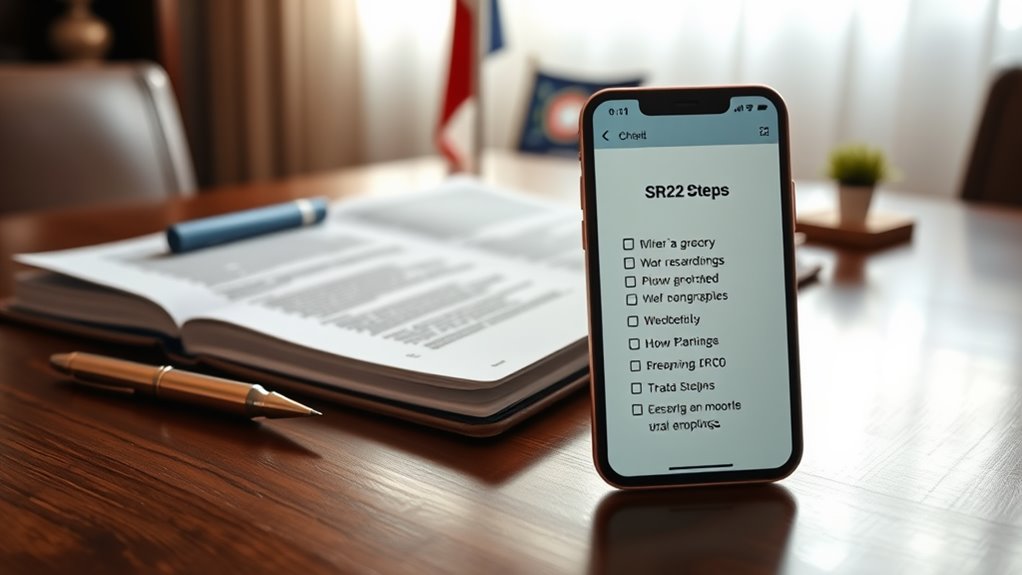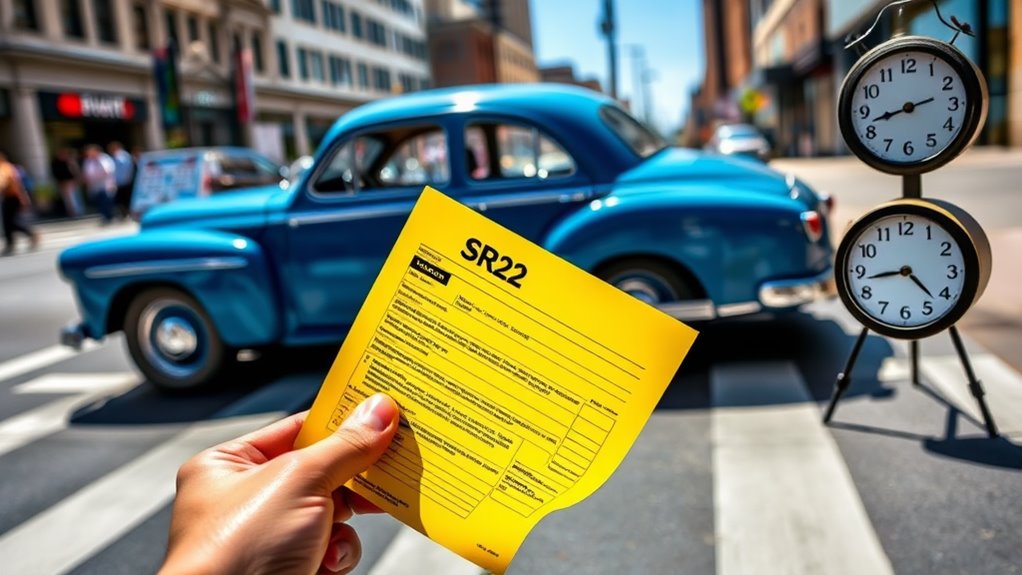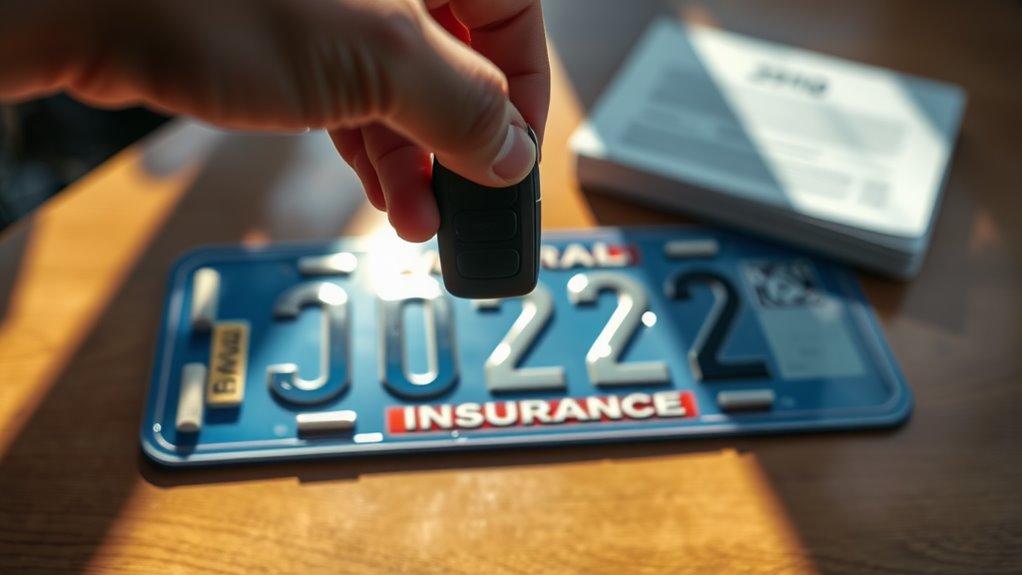Imagine cruising down Ohio's scenic highways, worry-free about your insurance coverage. Steering through the world of auto insurance can feel overwhelming, but it doesn't have to be. By following seven essential steps, you can secure the right policy for your needs. From understanding your driving record to keeping your coverage updated, each step is crucial for compliance and peace of mind. So, are you ready to explore how to simplify this process?
Key Takeaways
- Understand Ohio's minimum liability requirements: $25,000 for bodily injury and $25,000 for property damage.
- Gather essential documents like your driving record, proof of insurance, and personal ID before applying for coverage.
- Compare quotes from multiple insurance providers to find the best rates and coverage options available.
- If required, ensure to file an SR22 to prove financial responsibility after serious traffic violations.
- Maintain continuous insurance coverage to avoid penalties and complications with your SR22 filing.
Understanding SR22 Insurance Requirements in Ohio

If you're a driver in Ohio who's been labeled as high-risk, understanding SR22 insurance requirements is vital for reinstating or maintaining your driving privileges.
SR22 isn't a traditional insurance policy; it's a certificate proving your financial responsibility. You'll need this if you've had DUI/OVI convictions, been caught driving uninsured, or committed serious traffic violations. Obtaining an SR-22 filing is crucial to demonstrate that you can legally operate a vehicle.
SR22 serves as proof of financial responsibility for high-risk drivers in Ohio, especially after serious traffic violations.
Ohio mandates minimum liability coverage of $25,000 for bodily injury per person and $25,000 for property damage. Additionally, the SR22 certificate acts as proof that you meet Ohio's minimum liability requirements.
Keep in mind, you'll need to maintain this filing for three to five years, and you'll likely face additional fees ranging from $20 to $50, depending on your insurer.
Staying compliant is essential to avoid further penalties and guarantee you can drive legally in Ohio.
Steps to Obtain an SR22 Filing
To obtain an SR22 filing in Ohio, you'll need to follow a series of straightforward steps that guarantee compliance and restore your driving privileges.
First, gather essential documents like your driving record, proof of existing auto insurance, and personal identification. If you aren't insured, you'll need to secure a policy that meets Ohio's minimum liability requirements.
Next, contact an insurance provider to prepare the SR22 form. Once your insurer submits this form to the Ohio BMV, allow up to three business days for processing.
It's vital to maintain continuous coverage during this period to avoid penalties. Remember, lapses in coverage can lead to further complications, including license suspension, so stay proactive in managing your SR22 insurance.
Choosing the Right Insurance Provider for SR22
How do you navigate the often overwhelming options for SR22 insurance providers in Ohio?
Start by considering key factors like coverage requirements and costs. Ohio mandates minimum liability coverage of $25,000 per person, so verify your provider meets this.
Compare rates; American Family offers the cheapest SR22 insurance at around $26 per month.
Here are a few tips to keep in mind:
- Evaluate Coverage Options: Understand the difference between minimum and full coverage.
- Check for Hidden Fees: Look for providers with transparent pricing and no extra fees.
- Consider Provider Reputation: Choose a BBB-accredited company for reliable service.
Finding the right provider can save you money and guarantee compliance with state laws.
Filing Process and Timeline for SR22 in Ohio

Maneuvering the filing process for SR22 in Ohio can feel intimidating, but understanding the steps involved makes it manageable.
First, contact your insurer to initiate the SR22 filing. They'll prepare the SR22 form and file it with the Ohio BMV, which typically takes about 72 hours for processing.
Make certain you have essential documents ready, like your driving record, proof of insurance, personal ID, and vehicle registration. Maintaining continuous coverage is vital to avoid penalties.
Generally, you'll need to keep the SR22 for three years, but serious offenses can extend that duration.
Stay in open communication with your insurer to guarantee everything's on track and compliant with state requirements.
Costs Associated With SR22 Insurance
When you're faced with the need for SR22 insurance in Ohio, understanding the associated costs can help you navigate the financial implications more effectively.
The average monthly premium ranges from $55 for minimum coverage to $123 for full coverage. You'll also encounter a filing fee between $15 and $25.
Here are a few key points to take into account:
- Driving record: A clean driving history can lower your rates.
- Type of violation: More severe violations, like DUIs, greatly increase costs.
- Insurance provider variations: Different companies offer varying rates, so comparing quotes is essential.
Maintaining SR22 Compliance
Maintaining SR22 compliance is essential, especially if you want to avoid the legal and financial repercussions of non-compliance. You must keep your SR22 insurance active for the mandated 3 to 5 years, depending on your violation.
Maintaining SR22 compliance is crucial to avoid legal and financial penalties; keep your insurance active for 3 to 5 years.
Start by confirming that your current insurer can file the SR22 for you; if not, seek an insurer experienced with high-risk drivers. Verify your policy meets Ohio's minimum liability requirements of $25,000 for bodily injury per person, $50,000 per accident, and $25,000 for property damage.
Pay any filing fees promptly to avoid delays. Most importantly, maintain continuous coverage without gaps, as failing to do so could lead to license suspension and extend your compliance period.
Stay proactive to protect your driving privileges.
Reinstating Your License After SR22 Requirements

Reinstating your license after meeting SR22 requirements can feel intimidating, but it's a straightforward process if you follow the necessary steps.
First, make sure you've completed your suspension period and gathered all required documents. Then, visit your local BMV office to verify your paperwork.
- Pay any reinstatement fees, which can range from $15 to $600.
- Confirm that your SR22 certificate is filed and active with your insurer.
- Consider completing any required safety courses or counseling.
Once you've satisfied these conditions, your driving privileges will be restored.
Remember to maintain continuous insurance coverage to stay compliant with SR22 requirements. Taking these steps will help you regain your license and get back on the road with confidence.
Conclusion
Maneuvering the world of SR22 insurance in Ohio can feel like steering through a storm, but with the right knowledge and preparation, you can reach calmer waters. By understanding the requirements and following the steps outlined, you'll not only secure the necessary coverage but also protect your driving privileges. Don't let the complexities overwhelm you—stay informed, choose wisely, and maintain compliance to keep your driving record smooth and your insurance costs manageable.
















